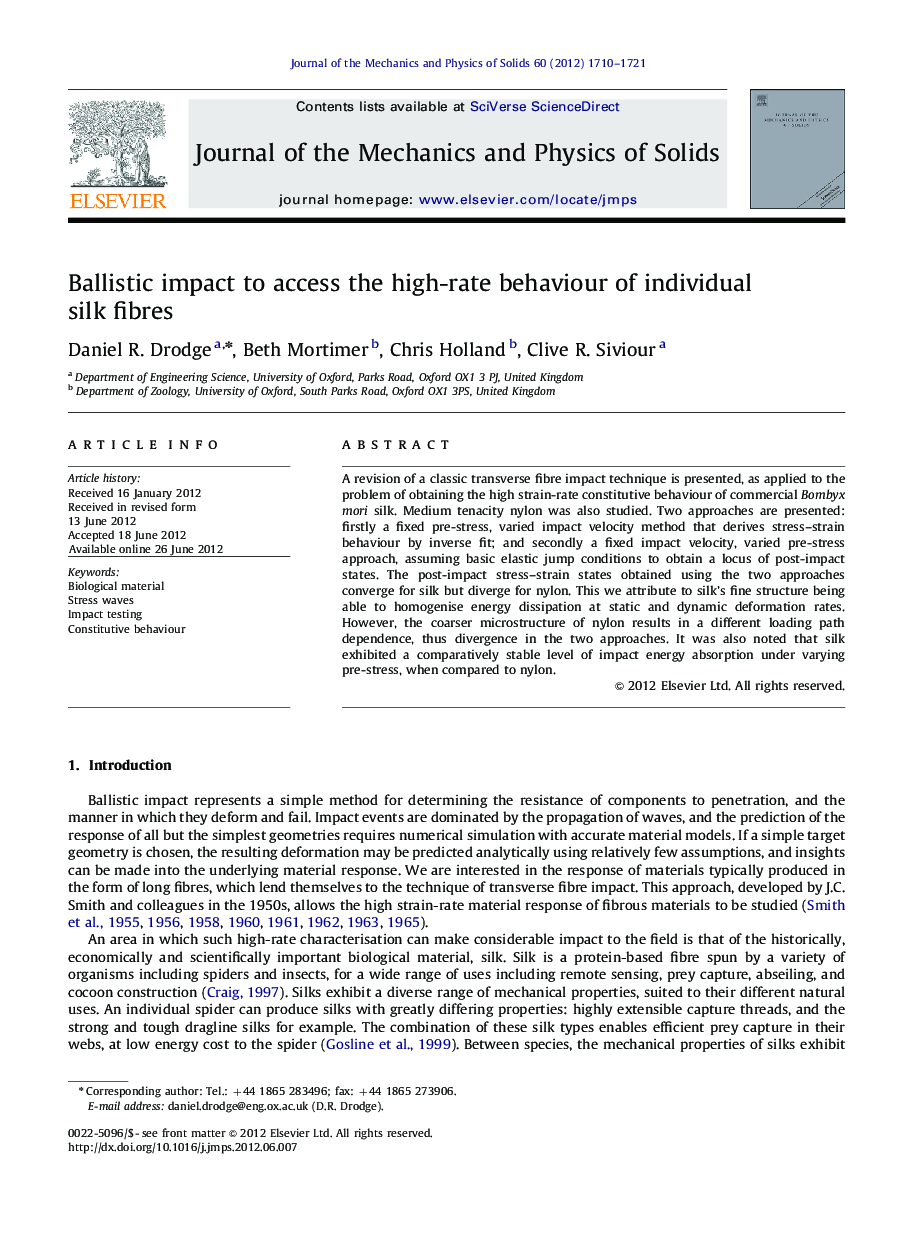| Article ID | Journal | Published Year | Pages | File Type |
|---|---|---|---|---|
| 798043 | Journal of the Mechanics and Physics of Solids | 2012 | 12 Pages |
A revision of a classic transverse fibre impact technique is presented, as applied to the problem of obtaining the high strain-rate constitutive behaviour of commercial Bombyx mori silk. Medium tenacity nylon was also studied. Two approaches are presented: firstly a fixed pre-stress, varied impact velocity method that derives stress–strain behaviour by inverse fit; and secondly a fixed impact velocity, varied pre-stress approach, assuming basic elastic jump conditions to obtain a locus of post-impact states. The post-impact stress–strain states obtained using the two approaches converge for silk but diverge for nylon. This we attribute to silk's fine structure being able to homogenise energy dissipation at static and dynamic deformation rates. However, the coarser microstructure of nylon results in a different loading path dependence, thus divergence in the two approaches. It was also noted that silk exhibited a comparatively stable level of impact energy absorption under varying pre-stress, when compared to nylon.
► High-strain-rate behaviour of cocoon silk and nylon studied using ballistic impact. ► Nylon and silk show constant modulus until applied pre-stress exceeds yield stress. ► Silk shows path independence due to nanoscale structure. ► Nylon shows path dependence due to coarse microstructure.
